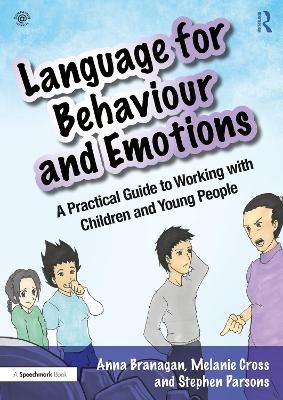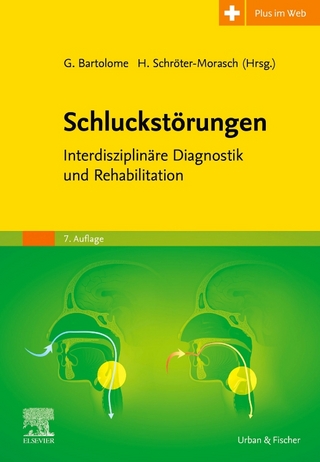
Language for Behaviour and Emotions
Routledge (Verlag)
978-0-367-33183-2 (ISBN)
This practical, interactive resource is designed to be used by professionals who work with children and young people who have Social, Emotional and Mental Health needs and Speech, Language and Communication needs. Gaps in language and emotional skills can have a negative impact on behaviour as well as mental health and self-esteem. The Language for Behaviour and Emotions approach provides a systematic approach to developing these skills so that young people can understand and work through social interaction difficulties.
Key features include:
A focus on specific skills that are linked to behaviour, such as understanding meaning, verbal reasoning and emotional literacy skills.
A framework for assessment, as well as a range of downloadable activities, worksheets and resources for supporting students.
Sixty illustrated scenarios that can be used flexibly with a wide range of ages and abilities to promote language skills, emotional skills and self-awareness.
This invaluable resource is suitable for use with young people with a range of abilities in one to one, small group or whole class settings. It is particularly applicable to children and young people who are aiming to develop wider language, social and emotional skills including those with Developmental Language Disorder and Autism Spectrum Disorder.
Anna Branagan is a speech and language therapist within a youth support team in Gloucestershire, working to enable vulnerable young people with speech, language and communication difficulties to access support more effectively. She also works within mainstream schools supporting inclusive practice in Worcestershire. Anna trained at Leeds Metropolitan University 25 years ago. She is co-author of bestselling Speechmark resources Language for Thinking (2nd edition, 2017), Word Aware (2013) and Word Aware 2 (2017). Melanie Cross is a speech and language therapist who has worked with looked after children for many years. Her work has focussed on developing speech and language therapy services for children and young people with Social, Emotional and Mental Health needs (SEMH). This work has resulted in publications including Children with Social, Emotional and Behavioural Difficulties and Communication Problems (2nd edition, 2011), and she was lead author of the Royal College of Speech and Language Therapists Clinical Guidelines on Social Emotional and Mental Health. She is also a trainer, video interaction guider and supervisor. Stephen Parsons is a speech and language therapist, trainer and author of practical language development resources for teachers and speech and language therapists. From 1996–2017, Stephen worked as a speech and language therapy service manager in Hackney and the City of London. With 30 years’ experience in the field, he is co-author of bestselling Speechmark resources Language for Thinking (2nd edition, 2017), Word Aware (2013) and Word Aware 2 (2017). Stephen graduated in speech pathology from Flinders University, before attaining an MSc in speech and language therapy from City University in 2000. He currently serves as Chair of NAPLIC, the association for professionals working with children and young people with Developmental Language Disorder.
Introduction Guide to using Language for Behaviour and Emotions Assessment Language for Behaviour and Emotions profile and action plan Scenarios Toolkit
| Erscheinungsdatum | 02.11.2020 |
|---|---|
| Zusatzinfo | 140 Tables, color; 350 Line drawings, color; 350 Illustrations, color |
| Verlagsort | London |
| Sprache | englisch |
| Maße | 210 x 297 mm |
| Gewicht | 1236 g |
| Themenwelt | Medizin / Pharmazie ► Gesundheitsfachberufe ► Logopädie |
| Sozialwissenschaften ► Pädagogik ► Sonder-, Heil- und Förderpädagogik | |
| ISBN-10 | 0-367-33183-7 / 0367331837 |
| ISBN-13 | 978-0-367-33183-2 / 9780367331832 |
| Zustand | Neuware |
| Informationen gemäß Produktsicherheitsverordnung (GPSR) | |
| Haben Sie eine Frage zum Produkt? |
aus dem Bereich


